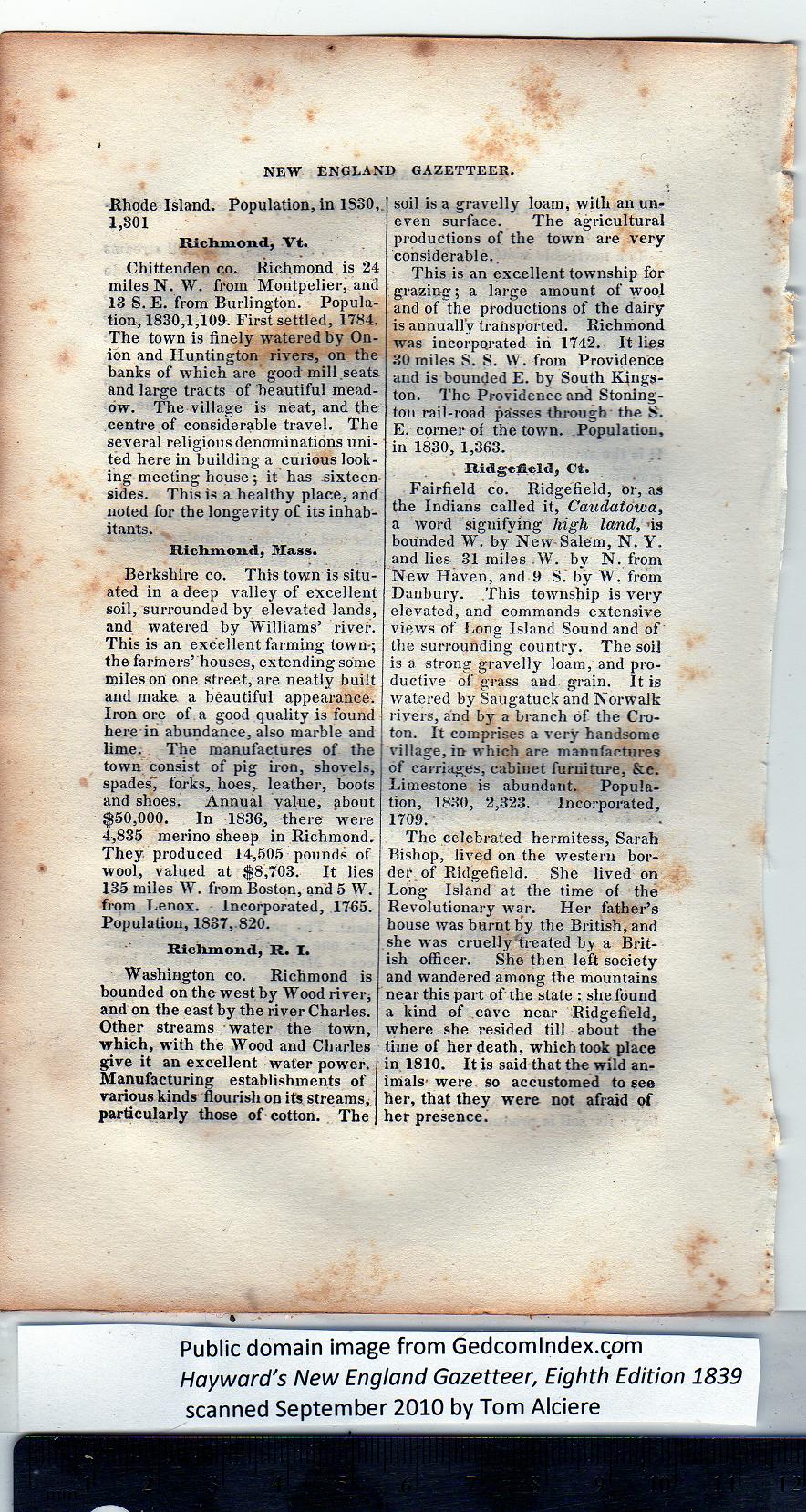|
Rhode Island. Population, in 1S30,.
1,301
Richmond, Vt.
Chittenden co. Richmond, is 24
miles N. W. from Montpelier, and
13 S. E. from Burlington. Popula-
tion, 1830,1,109. First settled, 1784.
The town is finely watered by On-
ion and Huntington rivers, on the
hanks of which are good mill seats
and large tracts of beautiful mead-
ow. The village is neat, and the
centre of considerable travel. The
several religious denominations uni-
ted here in building a curious look-
ing meeting house; it has sixteen
sides. This is a healthy place, and"
noted for the longevity of its inhab-
itants.
Richmond, Mass.
Berkshire co. This town is situ-
ated in a deep valley of excellent
soil, surrounded by elevated lands,
and watered by Williams’ river.
This is an excellent farming town-;
the farmers’ houses, extending some
miles on one street, are neatly built
and make a beautiful appearance.
Iron ore of a good quality is found
here in abundance, also marble and
lime. The manufactures of the
town consist of pig iron, shovels,
spades^ forks,, hoes, leather, boots
and shoes. Annual value, about
$50,000. In 1836, there were
4,835 merino sheep in Richmond,
They produced 14,505 pounds of
wool, valued at $8,703. It lies
135 miles W. from Boston, and 5 W.
from Lenox. Incorporated, 1765.
Population, 1837, 820.
Richmond, R. I.
Washington co. Richmond is
bounded on the west by Wood river,
and on the east by the river Charles.
Other streams water the town,
which, with the Wood and Charles
give it an excellent water power.
Manufacturing establishments of
various kinds flourish on its streams,
particularly those of cotton. The
soil is a gravelly loam, with an un-
even surface. The agricultural
productions of the town are very
considerable.. |
This is an excellent township for
grazing; a large amount of wool
and of the productions of the dairy
is annually transported. Richmond
was incorporated in 1742. It lies
30 miles S. S. W. from Providence
and is bounded E. by South Kings-
ton. The Providence and Stoning-
ton rail-road passes through tbe S.
E. corner ot the town. Population,
in 1830, 1,863.
Ridgefield, Ct.
Fairfield co. Ridgefield, or, as
the Indians called it, Caudatowa,
a word signifying high land, -is
bounded W. by New Salem, N. Y.
and lies 31 miles .W. by N. from
New Haven, and 9 S. by W. from
Danbury. .This township is very
elevated, and commands extensive
views of Long Island Sound and of
the surrounding country. The soil
is a strong gravelly loam, and pro-
ductive of grass and grain. It is
watered by Saugatuck and Norwalk
rivers, and by a branch of the Cro-
ton. It comprises a very handsome
village, in which are manufactures
of carriages, cabinet furniture, &e.
Limestone is abundant. Popula-
tion, 1830, 2,323. Incorporated,
1709.
The celebrated hermitessi Sarah
Bishop, lived on the western bor-
der of Ridgefield. She lived on
Long Island at the time of the
Revolutionary war. Her father’s
house was burnt by the British, and
she was cruelly treated by a Brit-
ish officer. She then left society
and wandered among the mountains
near this part of the state : she found
a kind ef cave near Ridgefield,
where she resided till about the
time of her death, which took place
in 1810. It is said that the wild an-
imals were so accustomed to see
her, that they were not afraid of
her presence. |
